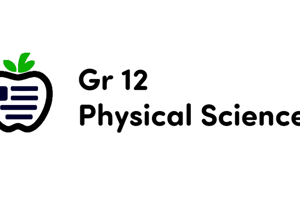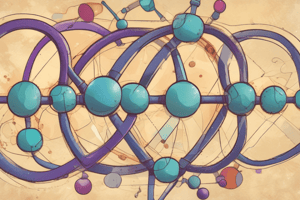Podcast
Questions and Answers
Which of the following statements correctly describes a ligand?
Which of the following statements correctly describes a ligand?
- A ligand can create only ionic bonds with metal ions.
- A ligand is a substance that can donate a pair of electrons to a metal ion. (correct)
- A ligand is always a negatively charged ion.
- A ligand can only be a small molecule, not a large complex.
What is the CFSE (Crystal Field Stabilization Energy) value for ext{CrCl}_6^{3-}?
What is the CFSE (Crystal Field Stabilization Energy) value for ext{CrCl}_6^{3-}?
- +1.2 Δ
- -2.4 Δ (correct)
- -1.0 Δ
- +3.5 Δ
What is the primary reason that ext{Cu(H}_2 ext{O)}_6^{2+} is blue in color while ext{Zn(H}_2 ext{O)}_6^{2+} is colorless?
What is the primary reason that ext{Cu(H}_2 ext{O)}_6^{2+} is blue in color while ext{Zn(H}_2 ext{O)}_6^{2+} is colorless?
- Cu2+ has a higher oxidation state than Zn2+.
- Cu2+ absorbs all wavelengths of light.
- Cu2+ forms larger complexes than Zn2+.
- Cu2+ contains d-electrons, which can be excited, while Zn2+ has no d-electrons. (correct)
Why does ext{Cu}^{2+} prefer a square planar geometry over a tetrahedral geometry?
Why does ext{Cu}^{2+} prefer a square planar geometry over a tetrahedral geometry?
What can be inferred about tetrahedral complexes in relation to spin states?
What can be inferred about tetrahedral complexes in relation to spin states?
Flashcards are hidden until you start studying
Study Notes
Bond Energy and Reactivity
- Decreasing order of bond energy: O2 > O2- > O22-
- O2 exhibits strong double bonds, contributing to higher reactivity, while O22- has increased electron repulsion, decreasing stability.
Existence of He2
- Helium (He2) does not exist due to its closed-shell electron configuration, resulting in no available bonding orbitals to form stable diatomic molecules.
Energy Absorption in Quantum Jumps
- Energy absorbed during an electron's transition from the second to third quantum level calculated using the Rydberg formula or transitions in hydrogen-like atoms.
- Use the formula: ΔE = -13.6 eV (Z^2) (1/n1^2 - 1/n2^2) if Z=1.
Band Theory and Molecular Orbital Theory
- Band theory explains electrical conductivity in solids, emphasizing the overlap of atomic orbitals forming continuous energy bands.
- Pi molecular orbital theory for 1,3-butadiene: involves the delocalization of pi electrons across multiple p-orbitals, resulting in resonance stability.
Ligands and CFSE Calculation
- Ligands are ions or molecules that donate pairs of electrons to a central metal atom in a coordination complex.
- Crystal Field Stabilization Energy (CFSE) for [CrCl6]3- involves the calculation based on the electron configuration and the ligand field, resulting in a CFSE value influenced by the geometry and splitting of d-orbitals.
Color of Cu(H2O)6^2+ vs. Zn(H2O)6^2+
- [Cu(H2O)6]2+ appears blue due to the presence of unpaired d-electrons, allowing for d-d transitions that absorb specific wavelengths of light.
- [Zn(H2O)6]2+ is colorless, as its d-orbitals are fully filled, resulting in no electron transitions in the visible spectrum.
Color of Ti(H2O)6^3+
- [Ti(H2O)6]3+ is often colored due to having partially filled d-orbitals that allow for electronic transitions, exhibiting various shades depending on ligand influence.
Cu2+ and Square Planar Preference
- Cu2+ prefers square planar geometry over tetrahedral because of reduced electron repulsion in the d9 configuration and stabilization from ligand interactions in a planar arrangement.
Spectrochemical Series
- The spectrochemical series orders ligands based on their ability to split d-orbitals, influencing the color and magnetic properties of the resulting complexes.
- Strong field ligands, like CN-, cause greater splitting and often lead to low spin configurations, compared to weak field ligands like I-.
Tetrahedral Complexes and Spin States
- Tetrahedral complexes tend to be high spin due to smaller crystal field splitting energy (Δ), allowing for more unpaired electrons.
- Electron pairing in d-orbitals is less favored in tetrahedral geometries compared to octahedral complexes, which increases magnetic properties.
Studying That Suits You
Use AI to generate personalized quizzes and flashcards to suit your learning preferences.




